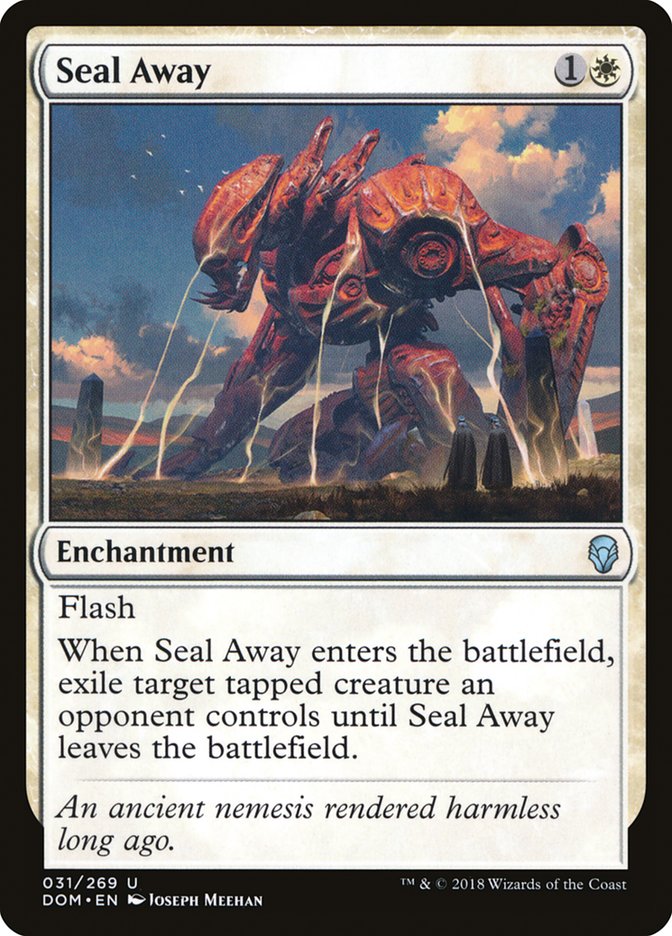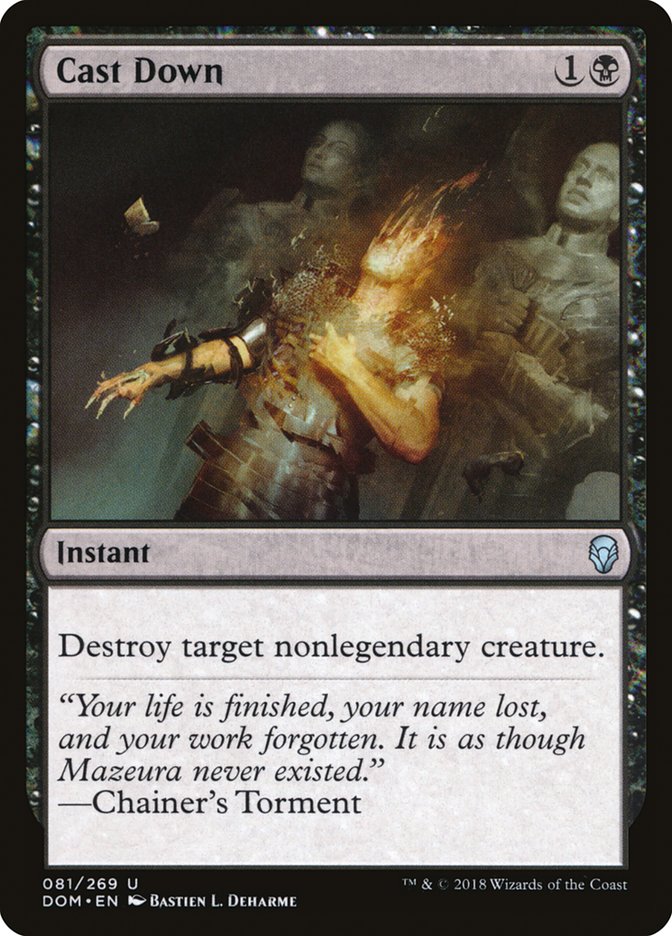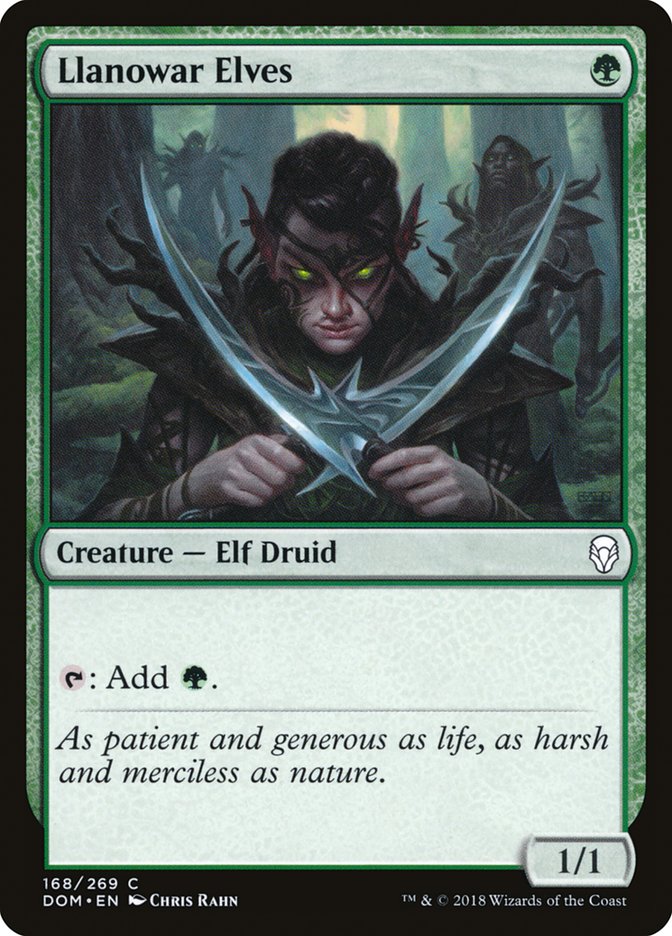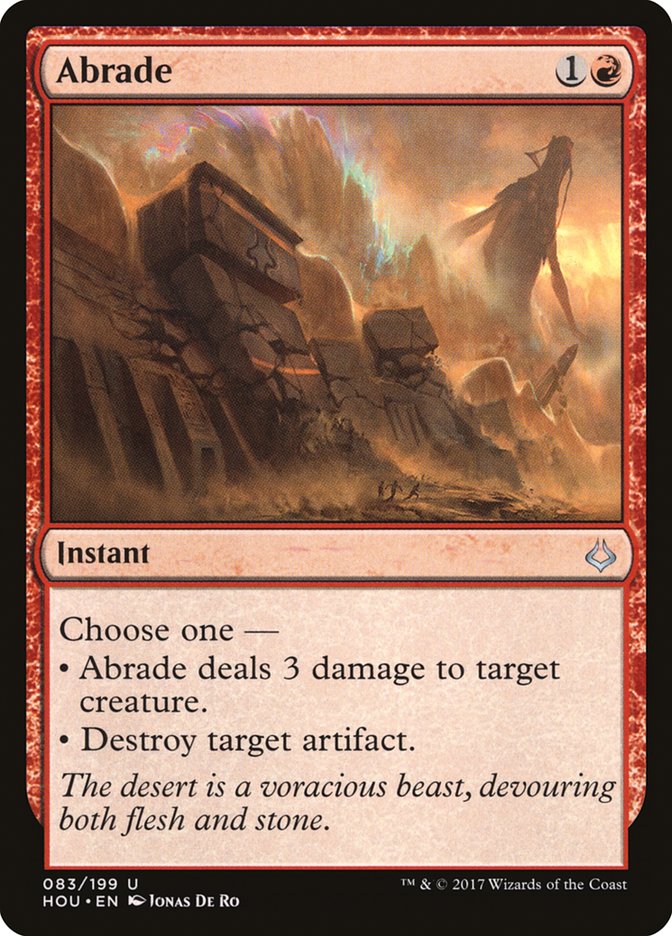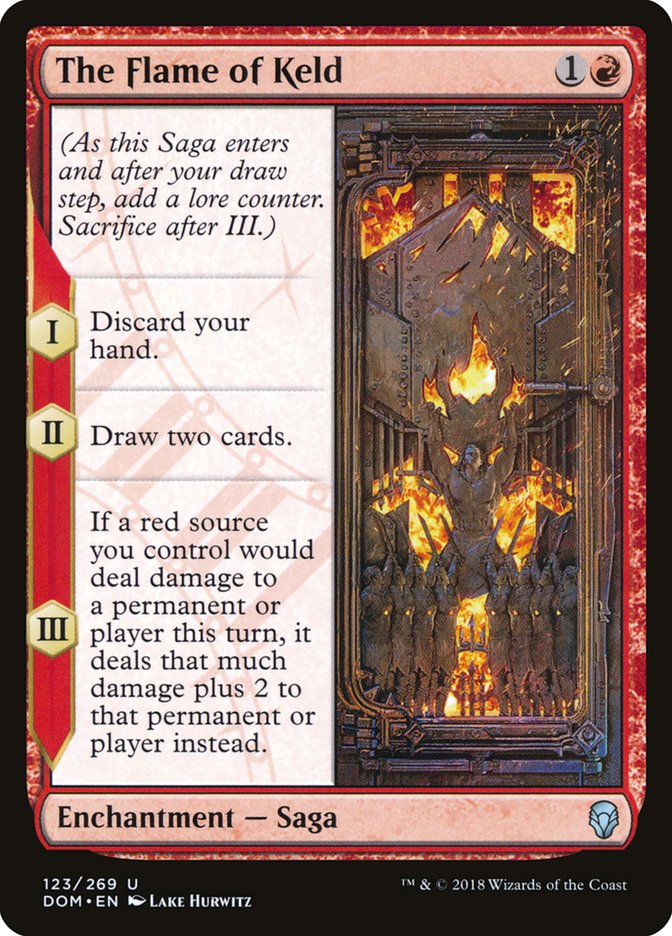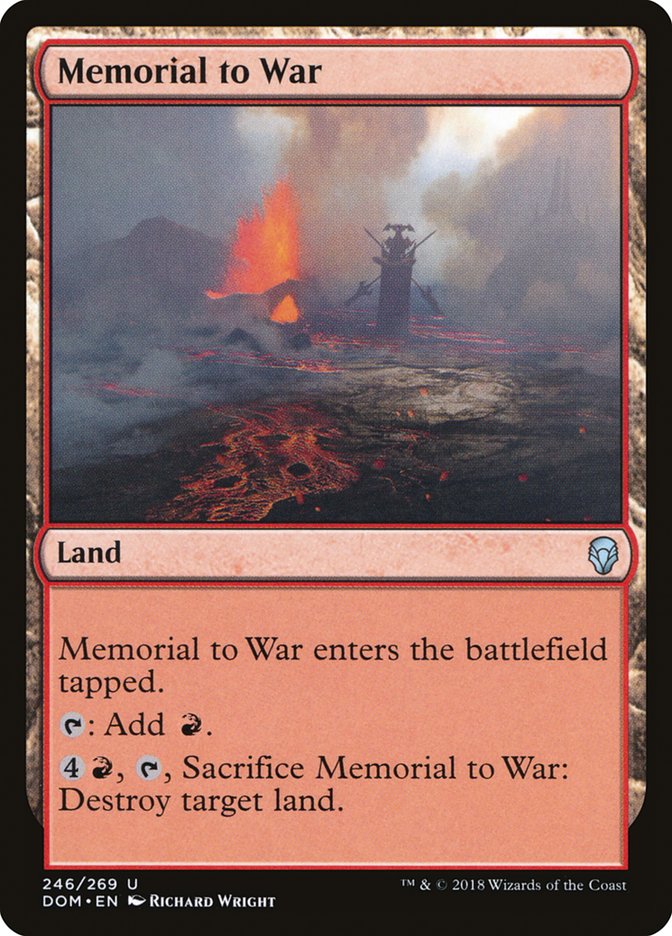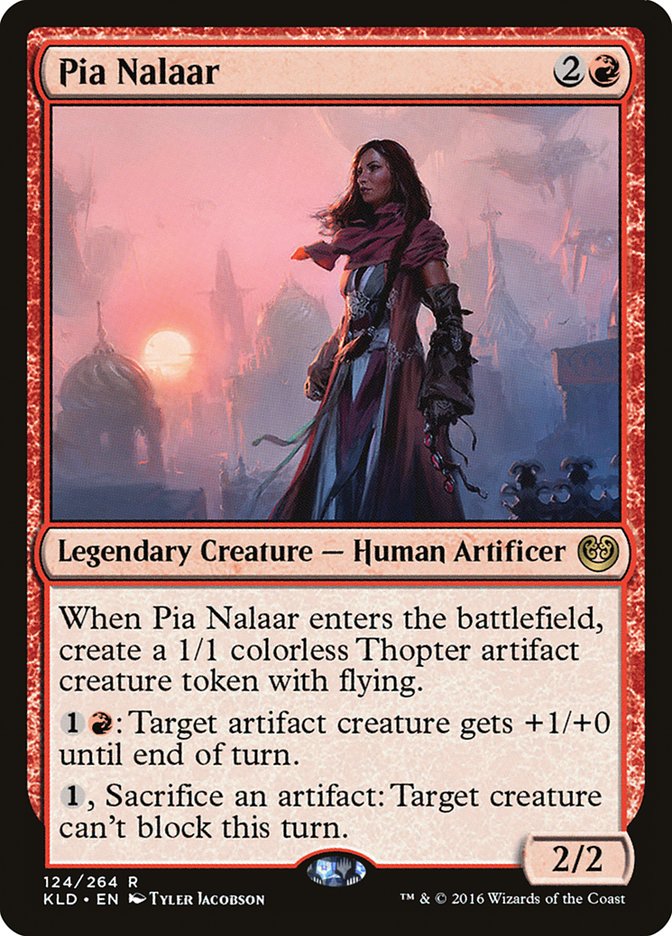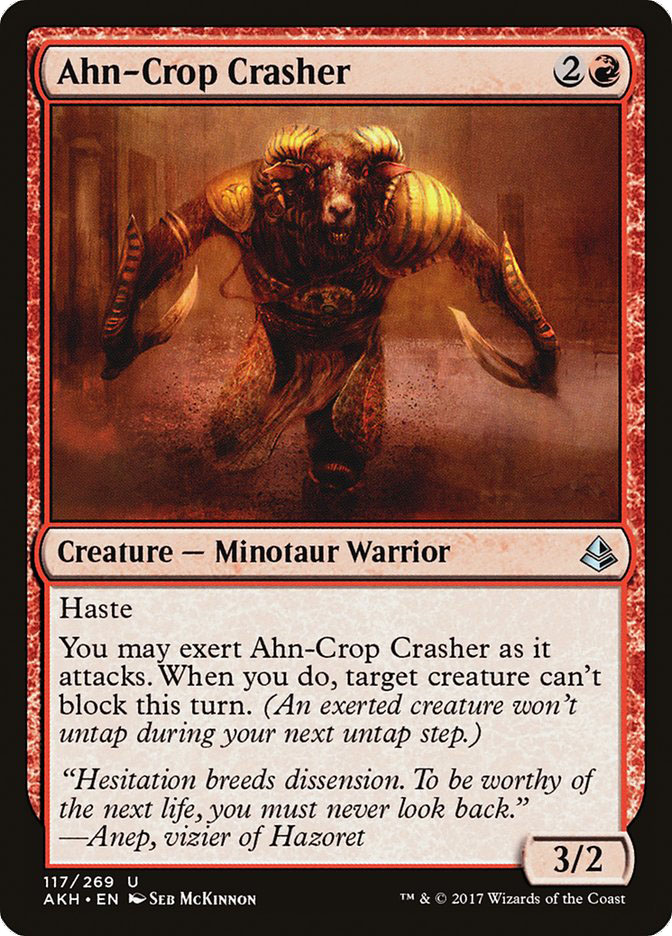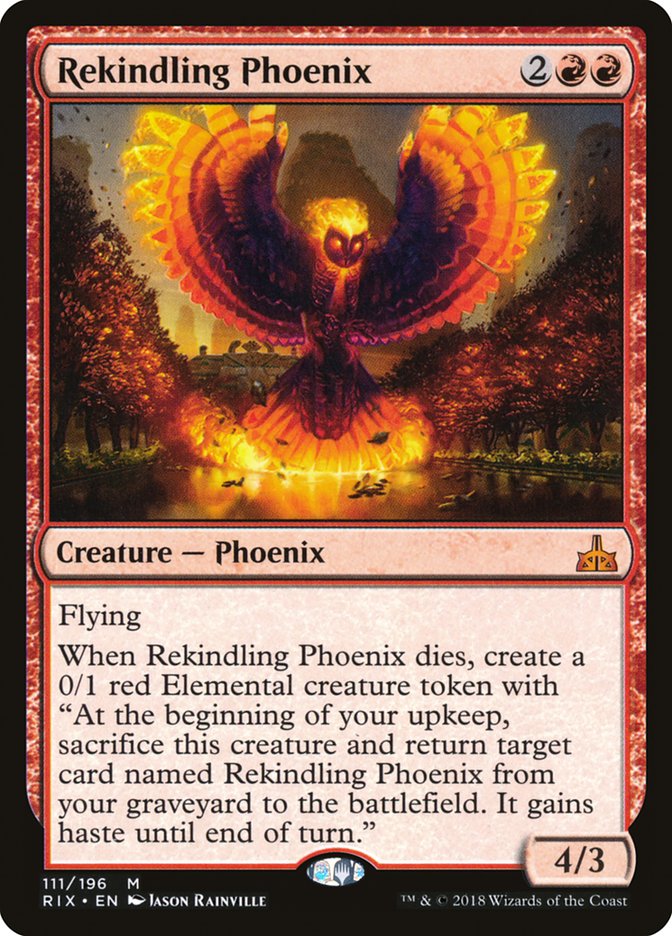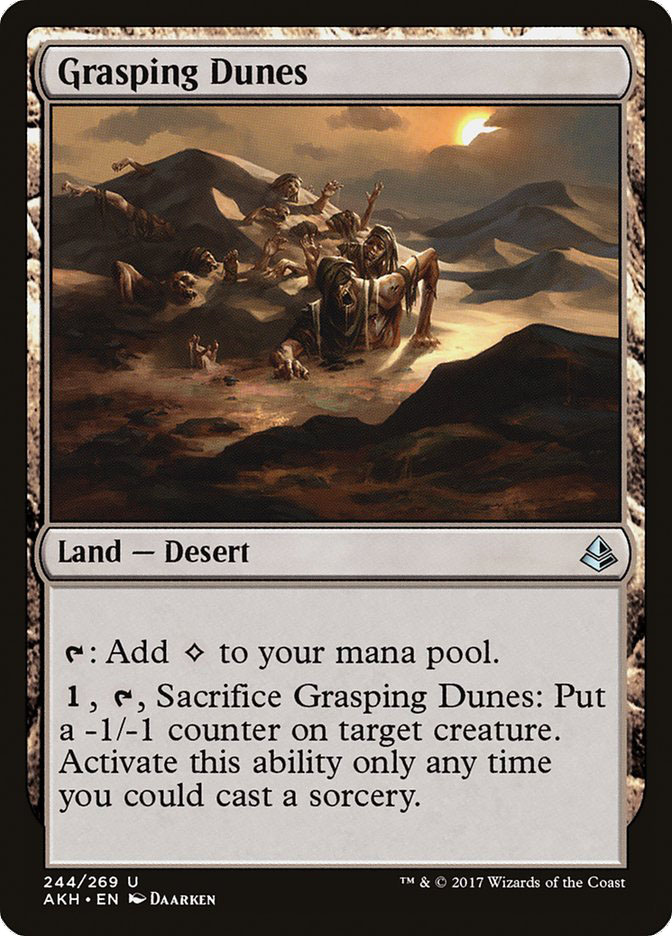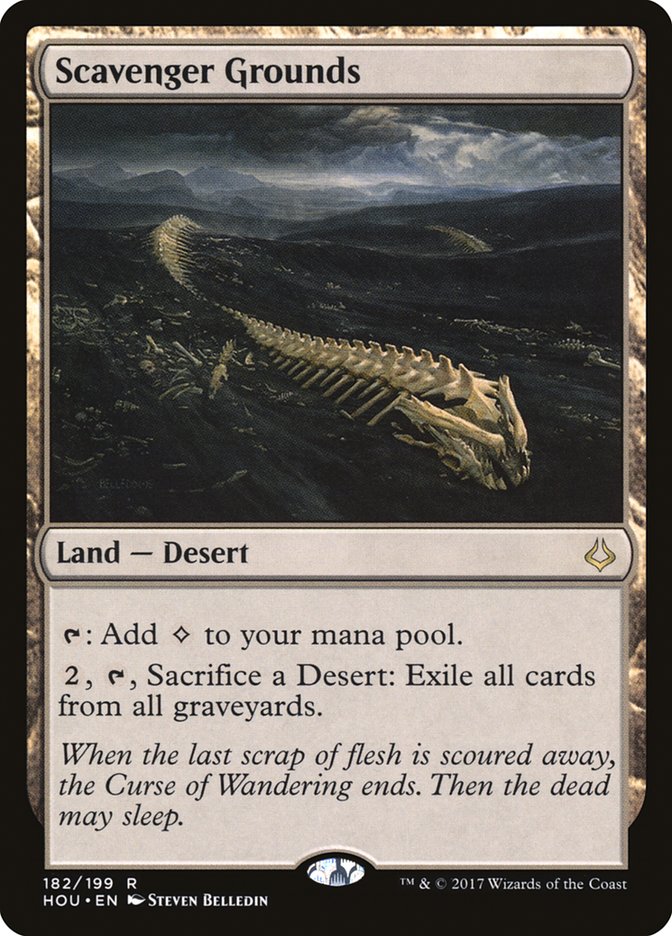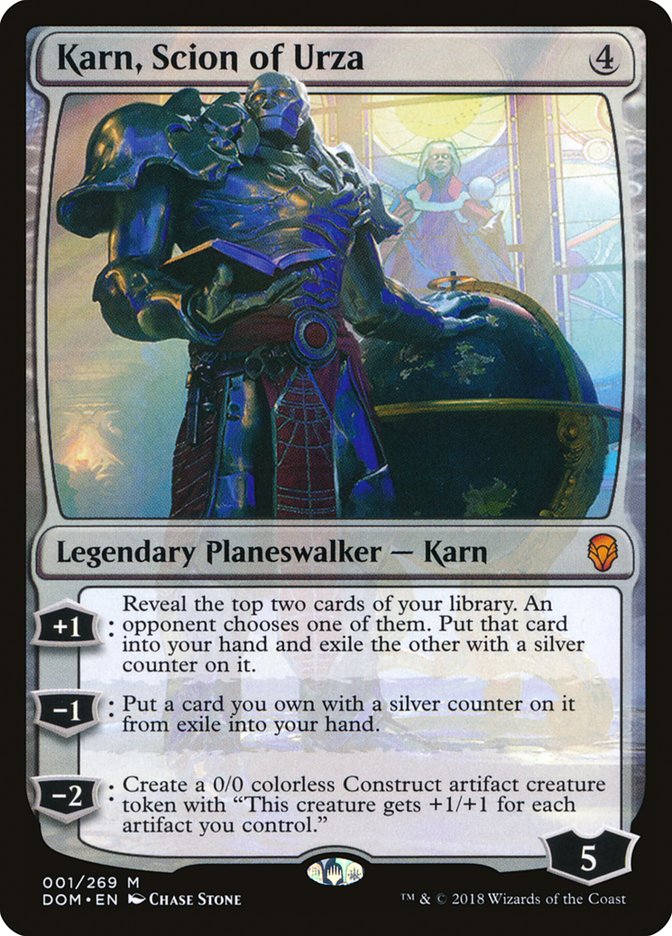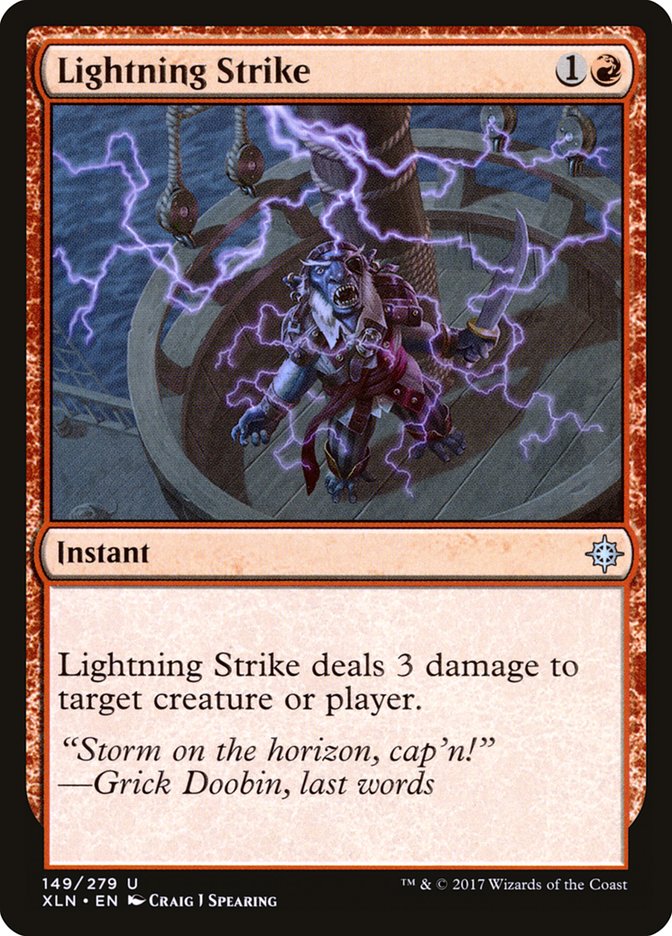Dominaria is incredible. With the average card’s power level off the charts, tons of build-arounds, and callbacks to old tournament staples, crowning Dominaria the best set since Magic Origins is hardly a hot take. There’s so much coming out that it’s nearly impossible to process everything coming out next week. This is due in part to the enormous information dump we had a few weeks ago, but that doesn’t account for all of it.
If every card in an underpowered set such as Born of the Gods were to be revealed simultaneously, it wouldn’t be hard to figure out what’s going on. But having 150 cards come out at once from a set like this is a lot to take in. There are over a dozen build-around cards in the set!
As cool as these cards may be, for the first couple of weeks, these generally aren’t the most important cards. Eternal formats adapt to new cards slowly, and in Standard, the role-players of the new set shine.
Think back to Amonkhet. A majority of the set’s Standard format was defined by synergy-driven decks. Aetherworks Marvel and Diregraf Colossus dominated Pro Tour Amonkhet, and Oketra’s Monument was the talk of the tournament at the SCG Invitational later that season. It didn’t start out that way.
Look at the #SCGATL that coincided with Amonkhet‘s release. Mardu Vehicles took the tournament by storm, and the winning decklist from the tournament wasn’t using anything from Amonkhet to do anything flashy:
Creatures (18)
- 2 Archangel Avacyn
- 4 Thraben Inspector
- 2 Thalia, Heretic Cathar
- 4 Scrapheap Scrounger
- 4 Toolcraft Exemplar
- 2 Walking Ballista
Planeswalkers (4)
Lands (25)
Spells (13)

Other than Cut // Ribbons and Magma Spray, there weren’t any Amonkhet cards in the deck! A complete lack of Aetherworks Marvel, Zombies, and Oketra’s Monument in the Top 8 really goes a long way in illustrating people’s aversion to trying out new things during the very beginning of a format. In the short term, it tends to be more rewarding to make slight modifications to an already tuned deck and win on the back of refinement rather than play an untested, albeit more powerful shell.
With a new high-stakes event in #SCGATL on the horizon, having a good Week 1 Standard deck is paramount. Couple the previous points with the fact that it’s a team tournament, and the odds of people taking risks in deck construction go through the floor. It’s easy to build a deck around The Antiquities War in hopes of spiking a tournament, understanding the likelihood of crashing and burning. It’s much harder to pull the trigger on something as risky as running a fairly untested brew when friends’ tournament results are also relying on your result.
Identifying New Role-Players
When a new set is released and there isn’t any kind of rotation, it isn’t hard to figure out what kinds of decks people will bring. Without anything being taken away from the format, people are likely going to stick to things that they’re familiar with rather than bringing anything too adventurous to a larger tournament.
The distribution of decks may change, but the pillars of the format are unlikely to change the day after a set is released. Identify what the big players of Standard are and review the list of previewed cards to see what easily slots into those archetypes.
Goblin Chainwhirler is obviously going to slot its way into the Mono-Red Aggro decks of the format, likely replacing Ahn-Crop Crasher or filling the hole that Rampaging Ferocidon’s banning left in decklists. Even if it doesn’t make its way into maindecks, it’s hard to imagine a world in which Goblin Chainwhirler isn’t at least an anti-token sideboard card.
Permanent removal for Scrapheap Scrounger and Rekindling Phoenix is nice. The abundance of sticky threats in the format is one of the big reasons that the Approach of the Second Sun decks have had trouble maintaining any kind of foothold in the format, and Seal Away gives these decks a significant efficiency upgrade to Cast Out.
Cast Down’s efficacy is going to rise and fall throughout its residency in Standard. The fewer cards from Dominaria that see play, the better Cast Down’s odds are. The biggest problem with the card is that the premier aggro decks of the format don’t exactly have a shortage of legendary creatures at their disposal:
Naturally, Pia Nalaar and Rishkar aren’t the most horrifying things to have stick around for a minute, but not being able to kill an early Kari Zev or Heart of Kiran is generally lights out. That being said, there are plenty of nonlegendary creatures in the format that a two-mana removal spell is a fine answer for.
It’s Llanowar Elves. We’ve seen green decks in the midrange area pop up in this Standard format. Insert something about retooling manabases to compensate for one-drop green cards, something about changing the number of lands in decks, and so on. Someone else has already written an article about it somewhere.
Here’s a decklist to serve as a starting point:
Creatures (26)
- 1 Verdurous Gearhulk
- 1 Pia Nalaar
- 4 Glorybringer
- 1 Rhonas the Indomitable
- 4 Earthshaker Khenra
- 3 Resilient Khenra
- 4 Merfolk Branchwalker
- 4 Rekindling Phoenix
- 4 Jadelight Ranger
Lands (25)
Spells (9)

What do all these cards have in common? They’re boring.
Sure, some players are the type to get excited over Llanowar Elves, and having a Doom Blade variant isn’t nothing, but these cards don’t take much brain power to evaluate.
Role-players are the types of cards that tend to warp a format, but due to the strategies that they’re enabling and preventing instead of the actual words within their textbox. The most prominent example of this effect in Standard is Abrade:
Abrade is literally incapable of ending a game. It isn’t going to do anything more than destroy a permanent, and its ability to do even that is conditional. In a format of four-toughness creatures, planeswalkers, and enchantments, Abrade isn’t doing much. On the other hand, in a format surrounded by artifacts and aggressive creature-based strategies, Abrade does a lot.
Role-players are almost always defined by the context of what is printed around them, and taking that context into account is what will make or break new inclusions in an otherwise proven archetype.
Level 1
After figuring out what cards are going to be role-players in existing Standard archetypes, finding room for them in a deck is the next step:
Creatures (27)
- 1 Pia Nalaar
- 4 Bomat Courier
- 2 Kari Zev, Skyship Raider
- 4 Hazoret the Fervent
- 4 Ahn-Crop Crasher
- 4 Earthshaker Khenra
- 4 Rekindling Phoenix
- 4 Fanatical Firebrand
Lands (24)
Spells (9)

Here’s a pretty stock Mono-Red Aggro deck from Grand Prix Seattle a few weeks ago. When trying to add anything new to the mix, we want to make sure that we aren’t ruining the primary strategy of the deck when adding anything new. On that note, a quick look over the list of Dominaria previews brings a few cards to try out in the deck:
Of these three, the biggest one to focus on is Goblin Chainwhirler. Goblin Chainwhirler is the easiest card to slide into Mono-Red Aggro, as it doesn’t warp the deck we’re building from.
The Flame of Keld can be incredibly powerful, but with the top-end that today’s red decks sport, the list would need some retooling to support the Saga. Memorial to War entering the battlefield tapped almost instantly disqualifies it from making the list, and having a six-mana effect that isn’t proactive stapled to the card isn’t much of an upside.
In the interest of full disclosure: I’m under the impression that Goblin Chainwhirler will be the most impactful card from Dominaria at #SCGATL. The only other card that’s even in the same discussion is Karn, Scion of Urza, and he’s likely going to need some time to find the right home.
Goblin Chainwhirler has everything Mono-Red Aggro wants. It provides a little bit of damage up front, has a reasonable body relative to its size, rumbles in combat, and makes it more difficult for the opponent to block.
You know what some of the most miserable cards for red decks are? X/1s and things that produce them:
On top of straight up killing things, the way that a one-sided mass ping can affect combat math, before or after it, can also devastate anybody caught off-guard by the Goblin.
With a little bit of a thought, slotting the card into red is academic. The most important part of the deck is curving, and that tells us most of what we need to know about trying to make room for the card.
The first place to look for cuts is the three-drop slot. Pia Nalaar doesn’t always find her way into the deck, and in terms of stats, she and her Thopter are near-identical to Goblin Chainwhirler. I’m not particularly interested in shaving every single copy of Ahn-Crop Crasher, but swapping a pair out seems appropriate. A large motivation for including the Chainwhirler in the deck is to get little creatures out of the way and ruin combat for the opponent. Ahn-Crop Crasher only fulfills one of these roles well, yet is much better at getting a single large body out of the way.
In the interest of further applying my theory that Goblin Chainwhirler will make waves at #SCGATL, the next card I’m interested in shaving a copy of is Rekindling Phoenix. The fiery fowl loses a fair chunk of value when facing waves of 3/3 first strike creatures that ping Elemental tokens as they hit the table. Lowering the curve is attractive in this style of deck as well.
The next step in ensuring the deck curves reliably is making sure it doesn’t have trouble casting Goblin Chainwhirler on turn three. To spare you and my editor a bunch of math talk, hitting three red mana on Turn 3 means that we want 21-ish red sources in the deck. Ironically, this basically means axing one of the two spell-lands in the deck completely or having some sort of 2/1 split between them.
I lean towards wanting to cut every copy of Grasping Dunes from the deck. The card was initially added by our own John Rolf at Grand Prix Memphis to combat Rekindling Phoenixes, and Goblin Chainwhirler is doing a reasonable job of that as it is. It feels like a more natural way of making our deck have better mana while also streamlining our deck at the same time. That puts our updated decklist to look something like this:
Creatures (27)
- 4 Bomat Courier
- 2 Kari Zev, Skyship Raider
- 4 Hazoret the Fervent
- 2 Ahn-Crop Crasher
- 4 Earthshaker Khenra
- 3 Rekindling Phoenix
- 4 Fanatical Firebrand
- 4 Goblin Chainwhirler
Lands (24)
Spells (9)

Level 2
After determining what to update for a format, the next step is to figure out what to beat.
Remember Goblin Chainwhirler’s competition for most impactful card Dominaria card at #SCGATL? Karn is no joke. I’m not here to convince anybody that they need to do things with the colorless planeswalker; Todd Anderson has already talked about being afraid of the card and Chas Andres affirmed that his price isn’t going down anytime soon. A lot of this is speculation, but one thing’s for certain: people believe in Karn.
This means that there will be Karn decks, and red decks need to be prepared to beat them. What’s the easiest way to do that?
The examples mentioned in this article weren’t accidental. Abrade plays a role. It gets permanents out of the way, including large Construct tokens, Heart of Kiran, and even pesky noncreature artifacts that may grow multiple Constructs to impossible sizes.
For a few weeks, leaving home with fewer than four copies of Abrade will be nothing short of irresponsible. That being said, if we sticking to our previous MO and try not to knock the deck too far off-balance, we’re basically restricted to playing around with these spells:
There are nine total removal spell slots to play with, and if we’re looking at Shock and Lightning Strike, we need to consider which of those is doing something that Abrade can’t, or that something else in our deck isn’t fulfilling.
Both cards being able to go upstairs is a huge reason they previously got such a nod over Abrade, and the relevance of this isn’t lost on me. Lightning Strike tends to go to the dome more frequently due to it being worth more damage, and also because of Shock being burnt in the early turns more frequently than Lightning Strike is. Why? It costs one, and as the game progresses, Shock has fewer and fewer targets.
Taking this into consideration, I can’t help but lean towards trimming copies of Shock. A fair bit of Shock’s mileage comes from it mopping up early cards from the opponent, and Goblin Chainwhirler can do the same thing in many cases. Due to curve concerns, it feels necessary to keep one of the Shocks, but I’d be completely unsurprised if Shock ended up underperforming in a world with pings at every turn and 3/3s seeing a bump in play.
After reconfiguring our burn split, that brings us to this list:
Creatures (27)
- 4 Bomat Courier
- 2 Kari Zev, Skyship Raider
- 4 Hazoret the Fervent
- 2 Ahn-Crop Crasher
- 4 Earthshaker Khenra
- 3 Rekindling Phoenix
- 4 Fanatical Firebrand
- 4 Goblin Chainwhirler
Lands (24)
Spells (9)

Looking Forward
Dominaria didn’t have a wide range of new red cards to add to Mono-Red Aggro, but that’s how role-players tend to work. Rather than building a deck from the ground up, there are some additions here, fiddling with removal suites there, and so on.
Even when brewing, having these skills is of utmost importance, as it helps build a gauntlet of decks to play against for an upcoming tournament. It just involved repeating this process a few times, once per archetype being updated with new cards.
I won’t have another article before #SCGATL, but I will be attending the tournament. The only advice I can definitively give before the weekend is to have plans against Goblin Chainwhirler and Karn, Scion of Urza. They’re the real deal, and it won’t be surprising when they do their thing. There’s no excuse to get demolished by the most obviously playable cards in the set.
Playability of cards in the set aside, Dominaria looks like it’s on track to be the coolest set for a Magic fan in over a decade. I’m not a long-time veteran who’s been playing since Alpha or anything, but even from the perspective of a kid who’s only been around since 8th Edition, every time I see cards from the set, I can’t help but shake a single feeling:
We’re going home.




